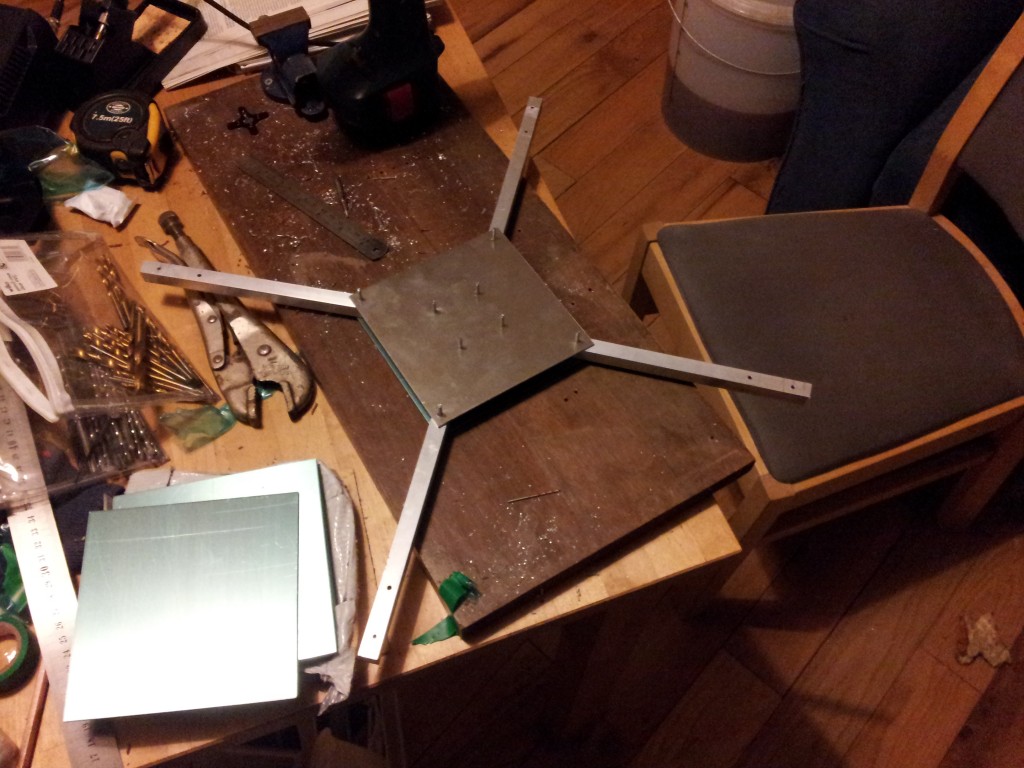I decided very early on that I wanted to build my own frame rather than buy a kit or anything. I wanted to learn some new skills, but I also expected to be crashing this thing quite a lot and didn’t want to have to keep waiting for new parts to be shipped out (or worse, find them out of stock!).
After some research, I decided to skip carbon fiber (for now?) and use aluminium. It’s strong, lightweight, cheap and pretty easy to work with. I asked around a few local fabrication companies but there apparently aren’t any aluminium stockists in Bradford any more. I gave up and bought online from aluminiumwarehouse.co.uk which worked out nicely, except for the £15 delivery charge.
I bought some square tubing of various sizes for the arms and a length of flat for some odd jobs (perhaps the landing legs). It’s pretty cheap (especially compared to buying from a diy store) so I bought about 10 metres in total. I could build a fleet of quadcopters with this.
I looked into getting the center plates laser cut by a local firm, but it turned out slightly too expensive. £5 each for up to 10 isn’t too bad really, but I wanted quite a few plates in case of crashes and I want a bit more flexibility with the layout as I develop the design. So instead I just got some blank square plates cut to size by aluminiumwarehouse at about 50p each (for 140mm x 140mm x 2mm) and am drilling them manually. I think the 2mm is a bit overkill, and each plate weighs in at 100 grams. I reckon I could have gotten away with 1mm even.
I’m using titanium-coated drill bits; a high rotational speed is recommended for aluminium, but I’ve done just fine with my battery powered drill which isn’t that fast.
And just a reminder to clamp your plates down firmly so the drill doesn’t catch them and fling them around like blunt alloy throwing stars.
I’ve started out with the 12.7mm x 12.7mm x 1.6mm tubing for now – it seems more than solid enough. Drilling the center plate has proven a little fiddlier than I’d hoped and one of my arms isn’t mounted as square as I need. But that’s why I bought lots of extra blank plates!
I cut the tubing using a hacksaw but it came out with uneven ends which makes it difficult to measure and align things. Next time I’ll use the mitre saw (for which I bought metal cutting blades just for this purpose, doh!).
The finished arms and plates (and screws) come in at 400 grams in total. I’m planning to cut some holes in the plates which might lighten it a bit, much not much.

Leave a Reply